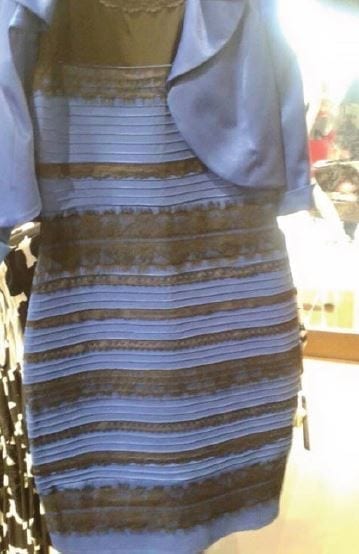Blue and Black or White and Gold? How Light Effects The Visual Cortex
A picture of a dress went viral yesterday as many debated on its color. Some see it as white and gold, but others see it as blue and lack. According to the person who posted the photo and who is also the owner of the dress, it’s black and blue. So why do people see it in different ways? This displays how human eyes and brains have evolved to see color in a sunlit world. Light gets into the eye through the lines in different wavelengths corresponding to different colors. Light hits the retina, which is located at the back of the eye, and has pigments fire up connections to the visual cortex.
The visual cortex is where we process signals into an image. The first burst of light is made of whatever wavelengths are illuminating the world, reflecting of what’s in front of you. Your brain figures out what color light is bouncing off whatever you’re looking at and takes the color from the “real” color of the object. are looking at, and essentially subtracts that color from the “real” color of the object. “Our visual system is supposed to throw away information about the illuminant and extract information about the actual reflectance,” says Jay Neitz, a neuroscientist at the University of Washington. “But I’ve studied individual differences in color vision for 30 years, and this is one of the biggest individual differences I’ve ever seen.” (Neitz sees white-and-gold.)














